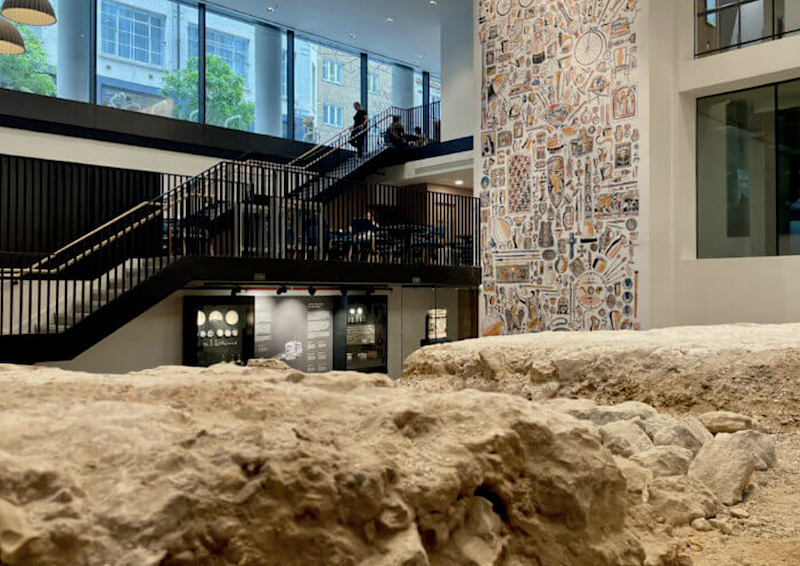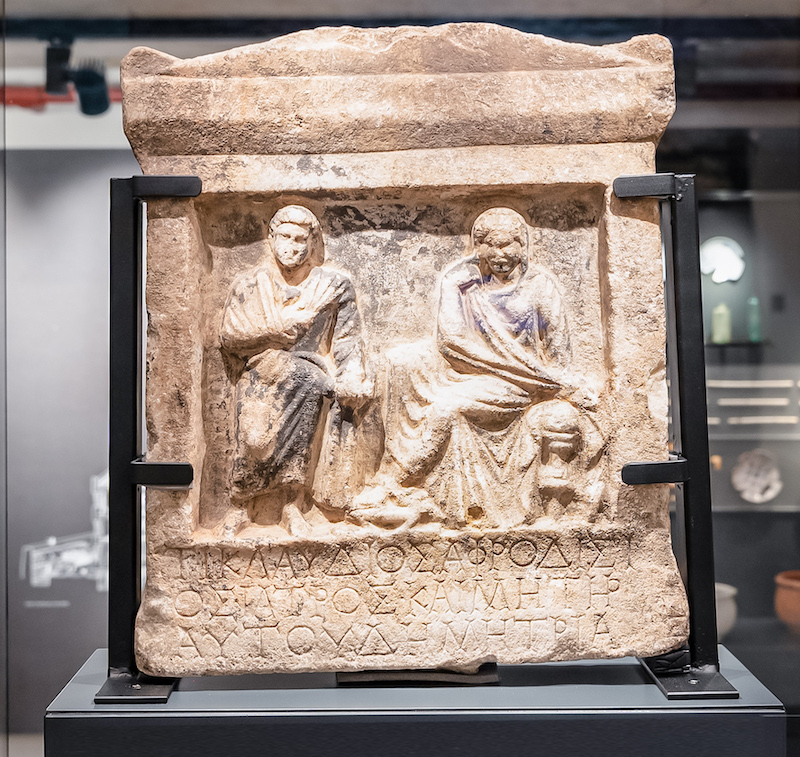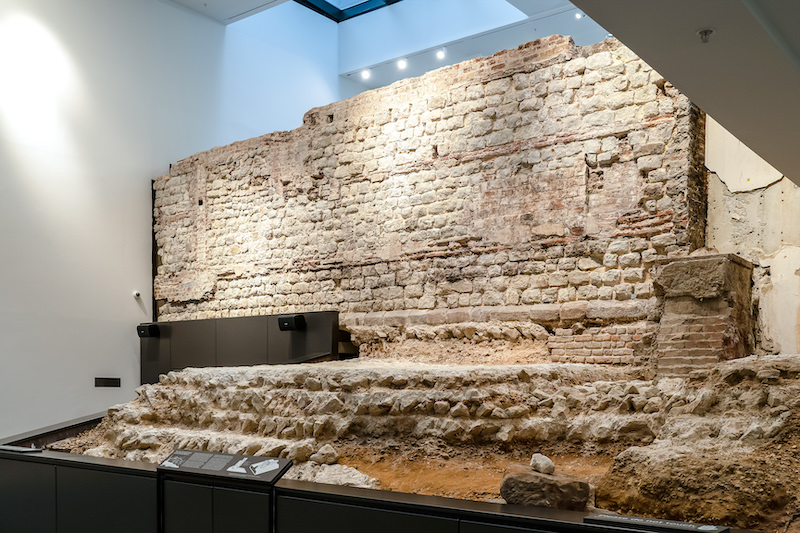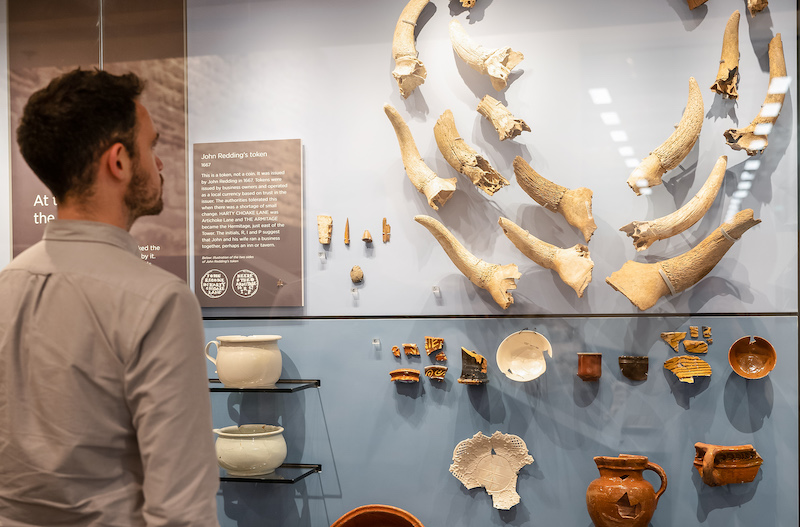Post
Roman wall at Vine Street is a feat of ancient engineering
5 Oct 2023
The London Society was invited by Historic England to check out their new (old) wall at Vine Street in the City of London and the many artefacts that now surround it. It is unusually placed at the bottom of a mixed-use development on the fringe of the financial centre, including student housing for postgraduates from King’s College London. Confused? Let’s explore some more.
The core of London dates back to the time when Londinium was the capital of a Roman province. Built some 1,800 years ago, a 3km wall wrapped around the city which was between 2 and 3 metres thick and made up of ragstone and limestone from Kent, and filled with rubble and concrete.
Check out our rundown of upcoming events
Amazingly, much of it has survived as London has undergone radical changes, sometimes sitting undisturbed in the basement of buildings where occupants would never know they were living above a crucial piece of our built heritage.
Historic England has been keeping an eye on this particular section of wall for over a decade and they have now entered into a rather unique partnership with developers Urbanest the City of London Corporation and the Museum of London to allow a new building to be created on top of the structure, while also creating a mini-museum at its base.
Visitors can now stroll around this feat of ancient engineering and even peek at the contemporary steel props that are currently keeping it in place. The wall is surrounded by vitrines that contain treasures from across the capital’s history, including Roman pots, the classic clay pipes and some more modern detritus from the early twentieth century.
Subscribe to the London Society newsletter
It’s quite astounding to have this publicly accessible space within the hustle and bustle of City life. It joins other nearby exhibits such as the Temple of Mithras under the Bloomberg Building or the Amphitheatre preserved within the Guildhall Art Gallery.
We’re incredibly lucky to have these sites at our fingertips for the curious visitor and free tickets for this latest addition can be booked here
Words by Rob Fiehn, director of the London Society



